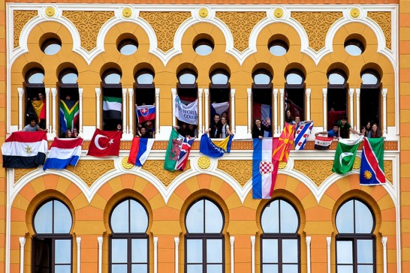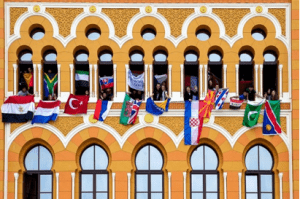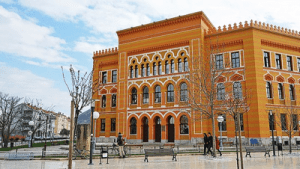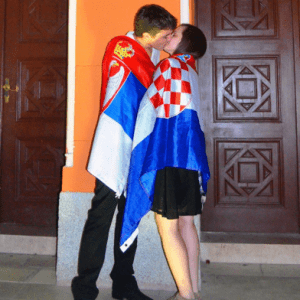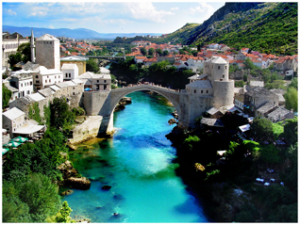Peace is Possible Contributor Mersiha Mulac discusses how the United World College in Mostar is shifting the educational paradigm in Bosnia and Herzegovina from one of segregation and isolation to one of mixed learning and celebration.
United World College has an affiliate school in post-war Bosnia and Herzegovina. Bosnia and Herzegovina is a country where a war was fought from 1992 to 1995. An armistice was signed through the Dayton Peace Agreement in November 1995.
Eighteen years later, the educational system of the country is divided into three educational systems, in three different national, ethnic and linguistic systems. In parts of the country called the Federation of Bosnia and Herzegovina, where the majority of the population is Bosniak and Croat, some children learn the Bosnian language and they follow the curriculum of Bosnia and Herzegovina. In another part of the federation, children learn the Croatian language and follow the curriculum of the neighboring Republic of Croatia. In the entity of Republika Srpska where there are mostly Serbian children, they learn the Serbian language and follow the curriculum of neighboring Serbia. This begs the question about Bosnia and Herzegovina, “Do children in Bosnia and Herzegovina live in peace?” This is like Hamlet’s existential question, “To be or not to be?”
And then in a no-man’s-land, there is an educational institution that is different from the above. It is not distinguished along national, ethnic or religious characteristics. Its name is “United World College” and it was founded in 1962 based on the concepts of the German pedagogue Kurt Hahn who advocated for the overcoming religious and cultural conflict. He said that conflict situations could be resolved in a world where young people from around the world mingle together.
Most young people in Mostar are divided between “us” and “them.” That means, “You are Bosniak” or “You are Croatian.” But at United World College in Mostar there are 124 children from as many as 34 countries. The most common are students from Bosnia and Herzegovina, who are surrounded with their peers: Americans, Africans, Arabs, Slavs and Scandinavians. This school was established in Mostar because this is very special town in the country. For example, Bosnian and Croatian students are going to the same school, but only the same building, not the same shifts, not at the same time, not the same classes. That is not their decision; that is not their choice. Bosnian and Croatian students would like to be with the each other, they would like to study, sing, play, learn or even just talk together. But, there is only one school in this town which offers that opportunity: the United World College.
The decision that the children of Bosnia and Herzegovina should attend classes in three different national programs in three different languages and in different shifts was made by national political parties and their leaders who have been in power since the war. Unfortunately, the decision cannot be reversed by the political parties, because they are elected by the citizens of Bosnia and Herzegovina, by the parents of children who attend school in different shifts. This means that a large number of parents support the concept of segregation, political intolerance, nationalism and building hatred and negative energy among children and youth in Mostar and across the country.
But the students of the United World College are living together in the same school dormitories, they are sharing a room with two or three roommates of the same gender, but from different ethnic and religious groups. These kids are “special” because they want to change the world in which they live whether they are from Norway, Korea, Iran, Palestine or Bosnia and Herzegovina. They dream of peace, they want for peace, they are trying to build peace amongst themselves to then spread to the world their peace, love, respect and friendship.
Peace is possible in the town of Mostar with the beautiful river of Neretva. Peace—established by foreigners, in a foreign language—is possible because the official language of the academic staff and students in this school is English. Peace is possible because all these students are sending the world the same message: “We want a peace, and you?” Peace is possible for us, independent of our names, religions, countries, cultures, and traditions.

